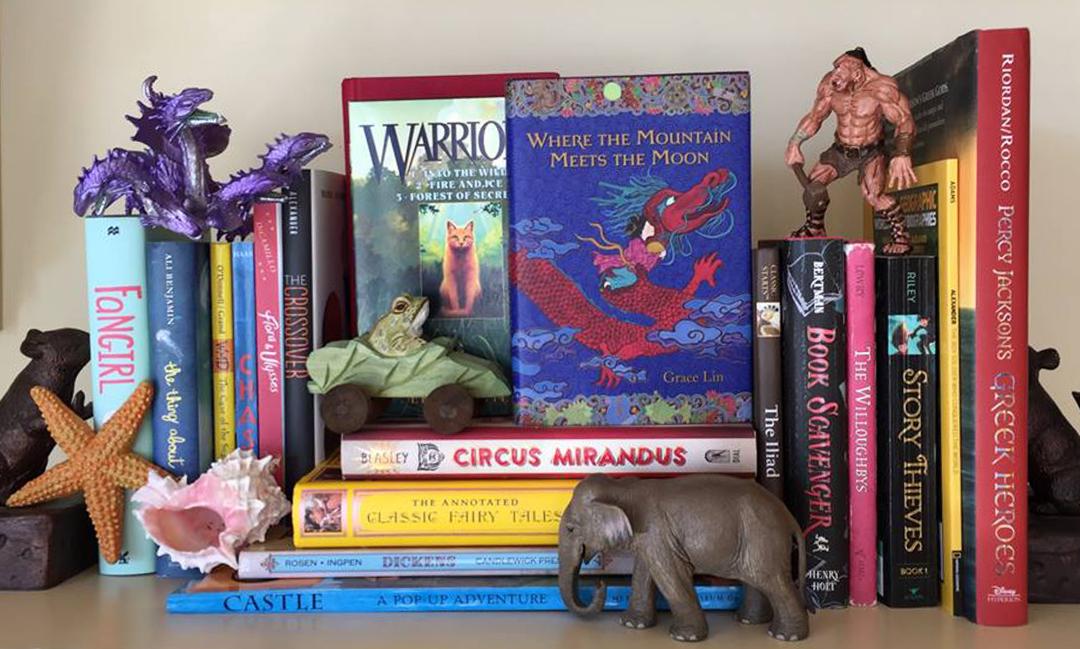 I will never know what it is truly like to be a child fleeing from the chaos and violence of my home, an immigrant child living in poverty, a tween facing a life of indentured servitude, or a person of color walking around in the United States today, but I can read stories through the eyes of characters who experience these challenges.
I will never know what it is truly like to be a child fleeing from the chaos and violence of my home, an immigrant child living in poverty, a tween facing a life of indentured servitude, or a person of color walking around in the United States today, but I can read stories through the eyes of characters who experience these challenges.
This is the power of fiction–to step into someone else’s shoes, to experience the world through someone else’s eyes. Pressing the pause button when needed, stepping out to contemplate the situation, asking the questions: How would it feel to be this character? What would I do?
This is why I spent time reading past midnight and hours contemplating the lives of Nisha, Mia, Amal, and Jade. Middle graders will want to enter into the worlds of these courageous young people, too.
This is the power of fiction.
The following book reviews will appear over the next several posts:
- The Night Diary by Veera Hiranandani (2018)
- The Front Desk by Kelly Yang (2018)
- Amal Unbound by Aisha Saeed (2018)
- Piecing Me Together by Renée Watson (2017)
![]()
The Night Diary is set during the Partition of India in 1947 when India won its independence from Great Britain, resulting in the forced migration of Hindus to India and Muslims to newly formed Pakistan.
 The Night Diary by Veera Hiranandani
The Night Diary by Veera Hiranandani
Published by Dial Books
Buy on Amazon
Buy on Barnes & Noble
Buy Locally
Goodreads
On the eve of her twelfth birthday, Nisha receives a diary from the family cook, Kazi, who tells her that adults will have neither the time nor the presence of mind to record what is to come.
From the start, Nisha is bewildered by the idea that politicians have drawn a line on a map that divides people according to their religion. What is to become of Nisha and her twin brother Amil? Their deceased mother was Muslim and their father is Hindu. Even though he is Muslim, surely Kazi will stay with the family. He has filled the role of nurturing parent as Nisha’s father is distant, critical, and spent from caring for patients during this brewing storm of societal upheaval.
 The family’s planned journey starts with a grand feast for friends and family to say their final farewells. Growing unease gives way to urgency as Kazi saves the family during a late night raid. They escape on foot carrying water, food, and a few prized possessions.
The family’s planned journey starts with a grand feast for friends and family to say their final farewells. Growing unease gives way to urgency as Kazi saves the family during a late night raid. They escape on foot carrying water, food, and a few prized possessions.
We follow Nisha across the unforgiving desert, to boarding a dangerously overcrowded train where she witnesses violence and mayhem. Along the way, Nisha must fend off desperate refugees who fight over the last drops of water and the sparse shade from the unforgiving heat.
There are twists and turns in this riveting, perilous journey with a surprise ending.
The beauty of this story is that we see how Nisha navigates internal and external obstacles through her journal entries. Reminiscent of the The Diary of Anne Frank, Nisha’s diary shines a light on how a young girl tries to make sense of a world where political forces have created divisions among people and has turned her world upside down.
Woven throughout the diary entries are Nisha’s descriptions of the soothing rituals of cooking with Kazi. His gift of the perfect tomato with a sprinkle of salt, the savory samosas, and crunchy pakora are outward signs of love, family, culture, and survival.
 “Each samosa felt like a small animal, soft and warm in my hand. We worked quietly, me filling the dough, Kazi frying them until they became golden brown.” (pg 68)
“Each samosa felt like a small animal, soft and warm in my hand. We worked quietly, me filling the dough, Kazi frying them until they became golden brown.” (pg 68)
Beautifully written, relevant to the plight of child migrants and refugees today, a must read for middle grade students and teachers.

